Alkali Silica Reactivity

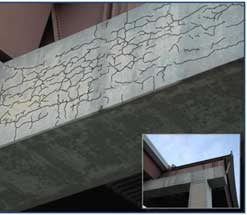
ASR is considered as “concrete cancer”, and mat take 10years to 15 years to show its symptom of degradation,.
SK Saxena PMP

Introduction–Alkali-silica reactivity (ASR) is an expansive reaction between reactive forms of silica in aggregates and potassium and sodium alkalis, from cement, aggregates, admixtures water (moisture), and pollution of land, air, water (environmental degradation)
ASR is considered as “concrete cancer”, as it crawls slowly inside the poured and hardened concrete, and mat take 10years to 15 years to show its symptom of degradation, which may lessen the anticipated structure life considerably.
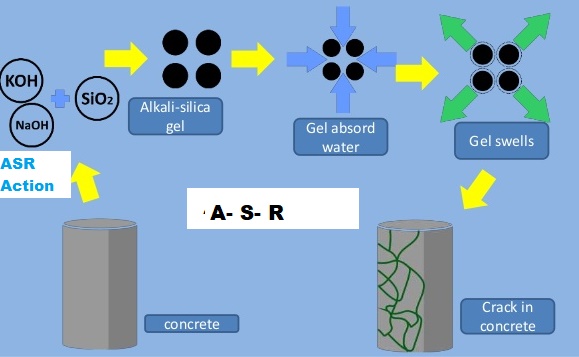
Contents:
AAR and ASR
ASR Trianle
ASR Process
About AAR and ASR
ASR Symptoms
Control of ASR
Laboratory test methods for ASR
ASR Mitigation
ASR Mitigation in existing structures
AS R control test process flow chart
Reference
ALKALI-AGGREGATE REACTION (AAR) or
ALKALI SILICA REACTIVITY (ASR)
Cement Water and Aggregates are three main contents of concrete which affect the properties of concrete in fresh or harden state. This is valid for
Ordinary Concrete
Standard Concrete (Normal Strength Concrete- NSC)
SCC
HSC
UPC
OHPC
And all other types of concrete in which Cement Water and aggregates are used
The AAR or ASR is the action between the Alkalis of Na and K (Na2O and K2O) present in the cement and the Silica -SiO2 present in aggregates in present of moisture.
As such the three factors responsible for ASR are:
Reactive aggregates- congaing reactive silica in them.
High alkali content in cement – Cements are now manufactured with low alkali cement or with a standard percentage of alkali contents
Humidity and humid environment- depend on temperature conditions.
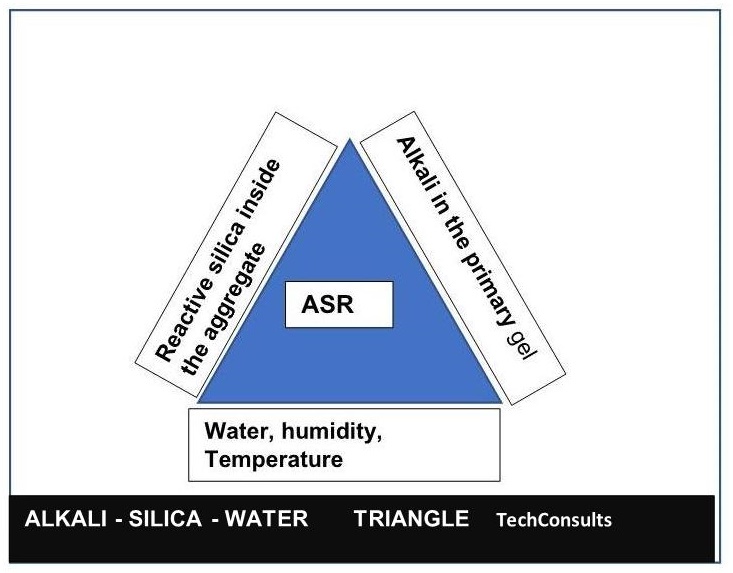
The CHS gel inside the concrete has alkaline environment (10 pH to 12 pH). Whenever this environment changes Whenever the pH is greater than the pH of existing concrete, it is the starting stage of ASR to take place.( this happened when the silica from inside the aggregates dissolves and reacts with the existing pore water contents of concrete or seeping of water from outside into concrete).
ASR Process
The process of initiation of ASR can be shown diagrammatically as follows:
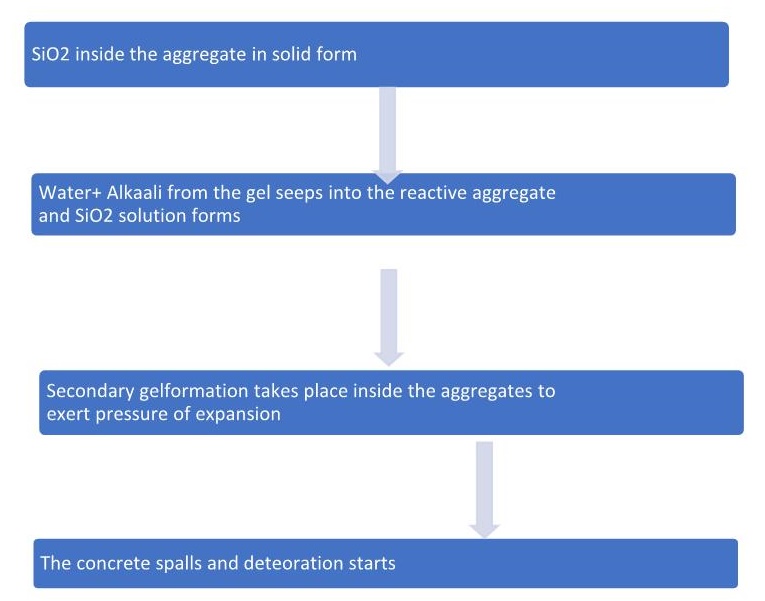
Water from the set concrete (pore solution containing alkali and hydroxide) finds entry into the aggregates and the aggregates, if are reactive, ASR takes place for formation of secondary gel (because of action between SiO2 and Ca (OH)2). The gel is hygroscopic in nature and swells in the presence of moisture. The expansion due to gel swelling propagates to the surface causing deterioration of concrete. The reaction is slow, and symptoms of damage may be visible only after 10 to 15 years. And when deterioration occurs it reduces the life of structures which are supposed to last for 100 years.
All types of rocks are not prone to ASR. Only reactive rocks are involved in this reaction
The main activity of ASR is the reaction between silica contents of the aggregates and the OH– ions in the pore solution.
The presence of alkali has no direct action on silica. The alkali presence raises the concentration of OH ions (Raises the pH value) and thus high pH, that leads to the initial breakdown of reactive silica components in the aggregates.
The spread of rocks and their rock formation through the world is not uniform. As such quarry site must be explored thoroughly for study of ASR in the rock fragments or the coarse and fine aggregates to be used for production of concrete. Since the effect of ASR in concrete is visible only after long duration, the assessment of Silica rocks is important for structures having a designed long life.
Some facts of AAR or ASR
The progress of alkali-aggregate reaction depends upon the availability of non-evaporable water in the paste.
The reaction is accelerated under the condition of alternating wetting and drying.
The optimum temperature for the promotion of alkali-aggregate reaction is in the range of 10 ° to 40 ° C.
ASR has been responsible in the deterioration of concrete structures, including hydraulic, roads, bridges, and other structures.
The aggregates containing seams of silica in their structure in the concrete mass get affected by the pore solution and form silica solution and later in contact with alkali hydroxides form ASR gel.
The presence of enough alkalise is another required for ASR to take place. Following are the sources of alkalis in concrete:
Portland cement – The main contributor for alkalis ( K2O and Na2O)
Supplementary cementing materials (e.g., fly ash, slag, silica fume).
Aggregates – Containing silica
Chemical admixtures.
Water quality
Symptoms of ASR
Type of structure that may be affected with ASR includes the structure associated with land (underground or over ground), hydraulic structures, mass concrete.
Visual symptoms are:
Expansion causing Cracking
Expansion causing deformation, relative movement, and displacement
Localized crushing of concrete
Extrusion of joint material
Surface spalls and pop-outs
Discoloration of surface and visibility of gel on the surface
Stress distribution in structural unit The Symptoms of ASR damage depending on
Severity of the attack – Contents of silica and alkalis
Exposure conditions – Depends on humidity and temperature
These symptoms if found in the concrete may further affect the concrete structure reinforcement. (The damage surface provide accessibility toto chlorides to inhibit reinforcement corrosion).
Temperature variation may cause freeze and thaw in the spalled concrete surface and may damage the concrete further


ASR induced caused to a structure damage showing a uniform pattern.
Control of ASR (Alkali Silica Reactivity)
As mentioned above there are three causes which need to be controlled. The measures must be taken before construction, during construction and after conditions holistically, as the manifestation of ASR take long time to come and must be implemented under state of art supervision and control.
These control measures are:
Testing of aggregates in reference of guidelines provided by ASTM and RILEM ( The ASTM methods is briefly suggested in flow line format, but it should be understood that the method is not enough and to ascertain the best quality of rock materials in reference to their silica contents) should be done including all the short term and long term tests.
The concrete should be done considering the durability aspects, with implementation of QA QC measures, using the services of a good dedicated supervision team and following the TQP (Total Quality People) approach.
The cement is the main source of alkalis. Therefore, the use of alkali should be restricted to a defined limit. (generally, this is followed in cement manufacturing) Low alkali cement should be used.
Supplementary Cementitious Material (SCM) should be use such as PPC, Fly Ash etcetera. Addition of SCM may replace 30% to 40% cement and therefore also the contents of alkalis
The surfaces of structures should be provided cover to ingress of water with the help of techniques, such as the use of thin spray liners (TSL), paints, polymers and surface densification.
LABORATORY TEST METHODS FOR ASSESSING ASR
The relevant ASTM codes provide guidelines for doing the tests in laboratory. Other organisations also have their guidelines, and these may be taken in notice. Following ASTM tests are performed in laboratory:
Test References |
ASTM C 295: Standard Guide for Petrographic Examination of Aggregates for Concrete |
ASTM C 289: Standard Test Method for Potential AlkaliSilica Reactivity of Aggregates (Chemical Method) |
ASTM C 227: Standard Test Method for Potential Alkali Reactivity of Cement-Aggregate Combinations (Mortar Bar Method) |
ASTM C 1260 expansion criteria: |
ASTM C441: Standard Test Method for Effectiveness of Mineral Admixtures |
ASTM C 1293: Standard Test Method for Concrete Aggregates by Determination of Length Change of Concrete Due to Alkali-Silica Reaction-a long term test. |
The Methodology adopted is as given in ASTM C 33/C 33 M-13 Appendix (Method for Evaluating Potential for Deleterious Expansion due to Alkali Reactivity of Aggregate .
ASTM C33/C33m – 13
(Standard specification for concrete aggregates)
Deleterious substances
Coarse aggregates for use in concrete that will be subject to weathering, extended in humid atmosphere or in contact with moist ground, shall not contain reactive material which can react with alkali in cement and cause expansion in concrete.
If the reactive material is present in injurious amount, the coarse aggregate is not prohibited when used with cement containing less than 0.6% alkali [(sodium oxide equivalent (Na2O + 0.65K20)]
Method for evaluation for deleterious expansion due to alkali reactivity of an aggregate.
Service Record Evaluation
Before going for the test in the laboratory, the service record data if available should be considered and it should be valid and comparable. Valid and comparable mean –
For 10 years, the record of satisfactory service should be available for aggregates, cementitious material and exposures similar for future use.
>10 years for long service life in moist conditions or if laboratory test results show that the aggregate may be deleteriously active.
Laboratory tests.
ASTM Test Methods |
Tests on aggregates |
1. ASTM C295 Petrography |
2. ASTM C 289 Chemical test |
Tests on Mortar |
1. ASTM C227 Standard Test method |
2. ASTM C441 For effectiveness of mineral admixture |
3. ASTM 1260 AMBT |
4. ASTM C1567 For combination of cementitious material |
Test on Concrete |
ASTM C1293 – concrete prism test |
ASTM C 295: Identification of potentially reactive minerals. OPAL, CHERT etc should be done by trained petrographer. Results should not be used solely to reject or accept the aggregate source. Some minerals are not detected in petrography examination. Results cannot be correlated with mortar or concrete results.
ASTM C 289 (chemical method) – Quick test.
Test results show:
Quantity of dissolved silica
Quantity of alkalinity
If the test results indicate deleterious or potentially deleterious character – use ASTM C 227 or ASTM C 1293 test methods.
Results cannot be correlated with mortar or concrete.
ASTM C 227 for mortar bar test for combination of aggregate and cement:
Parameter | Limit value |
Alkali content of cement for the test | At least 0.08% |
Expansion (Excessive) | ˃ 0.05% at 3 months |
˃ 0.10% at 6 months | |
Expansion not excessive | ˃ 0.5% at 3 months |
˂ 0.1% at 6 months |
Test method not suitable for slow reacting aggregates.
ASTM C 1260 Test method should be used for slow reacting aggregates.
ASTM C342 Test Method (Mortar bar) subject to changes in moisture and temperature.
ASTM C1260 Test method (AMBT for potential alkali reactivity of aggregates). This method is for the detection of materials that develop deleterious expansion slowly over a long period of time.
Parameter | Limit value |
16-day expansion | ˂ 0.10% Innocuous |
˃ 0.2% potentially deleterious | |
0.1% to 0.2% both innocuous and potentially deleterious. Further test – C1293 |
ASR C 1293 Concrete Prism Method
Evaluates aggregates independently
Evaluates aggregates and cementitious material (cement and cementitious material)
For Aggregates ˂ 0.04% in a year. Safe
For mix ˂ 0.04% in 2 years. Safe
Most reliable method among ASTM methods.
ASTM (USA) • Canadian Standards • RILEM TC 191-ARP • ACI Committee 201 are other test standards.
Following methods may be used for ASR Mitigation:
Use Non-Reactive Aggregates
(If the aggregate is to be used are shown non-reactive as per the test method C1260 or C1293)
Based on the above tests the aggregates may be used but the use of such aggregates must be supported by further test as per ASTM C 1293.
The use of such aggreges need to be supported with good QC and documentation.
Reduce alkali contents of cementitious materials
If the aggregates are found non-reactive, then, in order to have better confidence on the construction quality, the alkali content of concrete mixtures must be limited to safe value. Use low alkali cements.
Use of mineral admixtures as Supplementary Cementitious Material (SCM)
It is most common and confidence building way for mitigation of ASR.
But at the same time the durability aspects must be ensured. Ensure also that the alkali effect is not increased with the use of SCM.
The replacement of cement by SCM in range of 30% to 40% will reduce the contents of alkali. But ensure that the contents of alkali in the SCM are not there or are within permissible limits. Fly Ash is a useful SCM.
Further to add that petrographic test on aggregates identifies reactive silica mineral in aggregates, but do not establish that there shall not be ASR related problems when used with concrete.
The project uses cements sullied from different manufacturers and there may be much variations in their physical and chemical properties of the cement. The projects are long term endeavour and may use the materials from different rock formations from several places. In both cases preliminary sample base observations are used for the suitability of materials. The best way shall be to check on regular basis the quality of materials for ASR in project laboratory dedicated for ASR tests, which shall provide more sample data for better decision making and build confidence level
The work specifications clearly mention the procedure to follow to safeguard against ASR by adopting the tests as mentioned above or with any other guidance specific for the concerned region.
Equally necessary is to advise on the material for the use, alone or in the form of binary and tertiary combination so as to mitigate the excess of harmful contents
Mitigating ASR in Existing Concrete
Following techniques may be adopted for controlling / minimising the damages caused by ASR to the existing structures.
Treat existing cracks to minimize future expansion.
Do not use the alkali dominated materials in repair and maintenance of the structures
Save the structure from moisture or water by covering them and providing the drainage arrangement and limiting the environment humidity to safe limit. Thin spray liners, waterproof pains and polymer-based chemicals / paints may be used to cover the surface,
Check the expansive process bt application of outside pressure.
The surface densification is another better way to stop ingress of water into concrete.
Lithium compounds may be used to counter the chemical reaction, but it is difficult to apply it inside the structures
Densification of the surface is another method to avoid ingress of water into concrete.
Summery
Alkali-aggregate reaction is still a subject of extensive work worldwide. The spread of rocks and their rock formation through the world is not uniform. As such quarry site must be explored thoroughly for study of ASR in the rock fragments or the coarse and fine aggregates to be used for production of concrete. Since the effect of ASR in concrete is visible only after long duration, the assessment of silica rocks is important for structures having a designed long life. A specified tome bound dedicated effort based on quality inputs and outputs is required
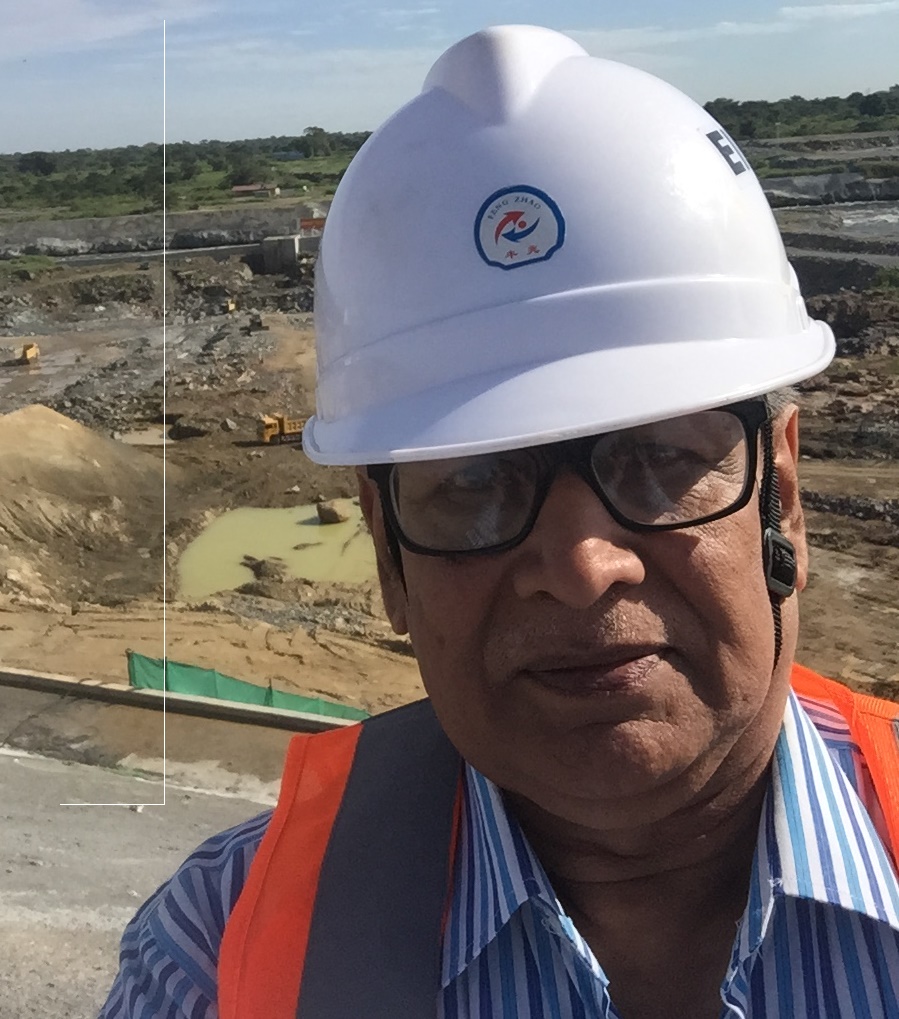

References:
-
The Federal Highway Administration (FHWA)Experts in Construction Materials, Systems and Structures (RILEM, from the name in French).
-
RILEM (Réunion Internationale des Laboratoires et Experts des Matériaux, systèmes de construction et ouvrages)
-
Reclamation MERL Report-09-23
-
New Recommendations for ASR Mitigation in Reclamation Concrete Construction
